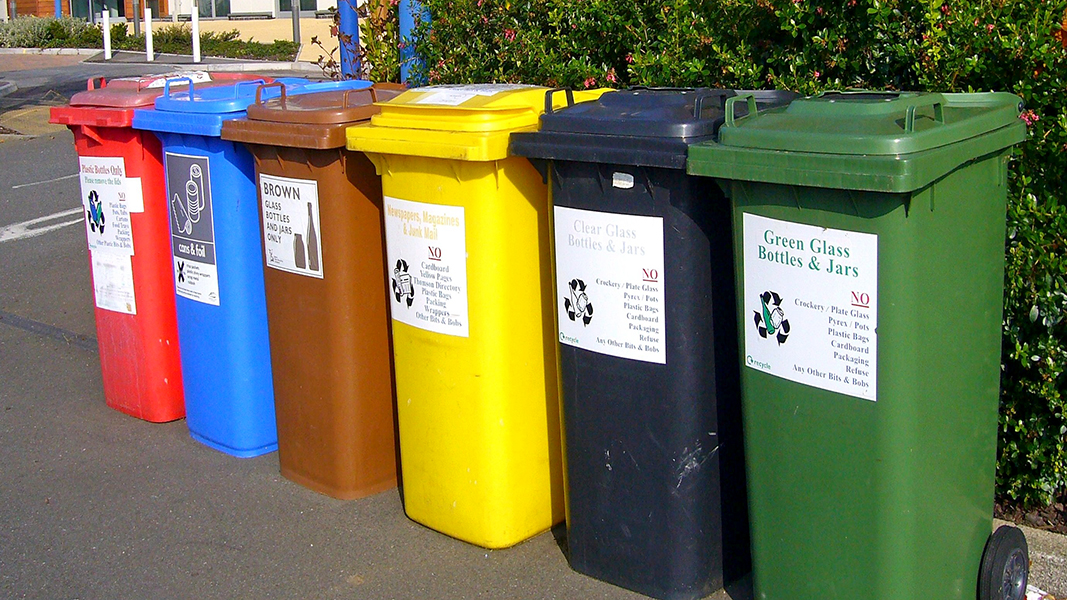Top: Photo courtesy of SWANA
A new report from the Solid Waste Association of North America’s Applied Research Foundation (SWANA ARF) examined three approaches to collection of curbside recyclables — biweekly single stream; biweekly dual stream in a split curbside cart; and weekly dual stream in open 18-gallon bins. A research topic submitted to the ARF requested that it consider options to lower the costs of collecting source separated recyclables, including reducing the number and types of materials collected, switching to dual stream collection, and reducing the frequency of collection to every other week. The final report, Curbside Recycling Collection Options, does just that. It begins with a history of how and why the industry started with multiple containers for various types of recyclables in the 1970s, and evolved to the majority of U.S. households receiving weekly single stream collection. Case studies were conducted in communities using one of the three options: Tucson, AZ (single stream automated biweekly collection); Mountain View, CA (biweekly dual-stream automated collection); and Lake Worth Beach, FL (weekly dual stream manual collection).
First, some stats: “It has been estimated that 53% of the U.S. population (about 158 million persons living in approximately 62.7 million households) has curbside recycling services provided automatically to their homes as a part of the residential solid waste management systems in their communities,” begins the report. “Furthermore, almost 90% of these residents are provided with single stream recyclables collection service.” Single stream grew in popularity as a way to achieve operational efficiency and reduce costs, especially if automated collection was being used. The most significant downside was the increase in contamination, which in turn lowered the value of the recyclables and ultimately led to China’s National Sword policy that essentially shut off that market for U.S. materials.
The report uses a cost/household baseline of $5/month for weekly automated single stream recycling, with 0% reduction in contamination. The researchers found that switching from weekly to biweekly automated single stream collection would save households $2/month, but there would be 0% reduction in contamination. Dual-stream automated collection involves use of a split cart with commingled containers on one side, and commingled fiber on the other. The collection vehicle has split compartments for each stream. Household savings would be $2/month, with a 10% reduction in contamination. Use of weekly collection of the 18-gallon bins — one for fiber and one for containers — yields a savings of $1/houshold/month, and a 10% reduction in contamination. Related considerations for the dual stream approach are the need to buy split trucks (and new containers to replace the commingled recyclables carts), and access to materials recovery facilities that are designed for dual streams vs. commingled streams. The weekly manual collection of dual streams in 18-gallon bins limits the amount of recyclables households can set out, and requires workers to empty the bins into the truck by hand.
Curbside Recycling Collection Options is available to SWANA members with subscriptions to the ARF reports, and to all SWANA members one-year after its release. An executive summary is available.










